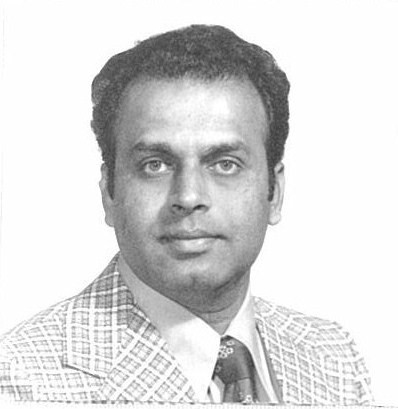case report | DOI: https://doi.org/10.31579/2834-8087/015
Tracheal Resection in Locally Recurrent Differentiated Thyroid Cancer; a Case Report
- Vijay Pratap Singh *
- Akash Kumar Singh
- Sumantra Sircar
- Priyadarshi Ranjan
- Arun Kumar Jha
Surgical Oncology Savera Cancer and Multispeciality Hospital, Patna, Bihar
*Corresponding Author: Vijay Pratap Singh, Surgical Oncology Savera Cancer and Multispeciality Hospital, Patna, Bihar.
Citation: Vijay P. Singh, Akash K. Singh, Sumantra Sircar, Priyadarshi Ranjan, Arun K. Jha (2023), Tracheal Resection in Locally Recurrent Differentiated Thyroid Cancer; a Case Report, Archives of Clinical Investigation, 2(5); DOI:10.31579/2834-8087/015
Copyright: © 2023, Vijay Pratap Singh. This is an open access article distributed under the Creative Commons Attribution License, which permits unrestricted use, distribution, and reproduction in any medium, provided the original work is properly cited.
Received: 30 August 2023 | Accepted: 20 September 2023 | Published: 06 October 2023
Keywords: thyroidectomy; tracheal resection; anastomosis
Abstract
Background: Locally recurrent papillary carcinoma of thyroid is a treatable disease. For endotracheal invasion, tracheal resection and anastomosis is a viable option in certain cases which gives significant result.
Case presentation: A 46 year female patient with a history of total thyroidectomy + bilateral neck dissection for carcinoma thyroid two years back presented with recurrent thyroid mass in neck with endotracheal invasion. This was successfully treated with segmental tracheal resection with end to end anastomosis after 4 cm defect. Post – operative course was uneventful.
Conclusion: Endotracheal invasion of recurrent carcinoma thyroid is not a contraindication for surgery. Full circumferential resection and end to end anstomosis is preferred to shaving trachea. It can be safely anastomosed upto 5 cm defect length. Apart from giving immediate relief of intratracheal bleeding and obstructive airways, it gives long term disease free survival.
Introduction
Papillary carcinoma has an excellent survival. This cancer presents relatively low malignancy, good prognosis and a ten year survival rate of over 90% [1]. Recurrent papillary thyroid cancer mainly refers to localized and distant recurrence, including recurrence of the primary tumor, lymph node metastasis, invasion of the esophagus and trachea, invasion of muscles, soft tissue and nerves and distant metastases. Different theory has been proposed for etiology of recurrence in the PTC. Pathological type, staging, degree of extra thyroid invasion, lymph node metastatic rate, age and type of surgery may be related to recurrence of cancer [2-4]. That’s why patient are kept on lifelong follow up. Current ATA guideline defines “disease free status” as the following: 1. No clinical evidence of tumor, 2. any evidence of tumor of RAI imaging and / or neck ultrasound, 3. Unstimulated TG <0>
Case Presentation
Hence we are presenting a case recurrent papillary thyroid cancer invading tracheal lumen with signs of obstruction, which was successfully treated with surgical resection along with segment of trachea and end to end anastomosis. A 46 year female patient initially presented to the hospital with complaints of swollen neck for three years in October 2016, when she was evaluated for thyroid cancer patient had no particular past or family history of thyroid disorder or neoplasm. Clinical examination and USG of neck suggested neoplastic thyroid lesion. FNAC turned out to be follicular neoplasm. Complete blood count and thyroid function test was normal. Chest X ray posterior-anterior view was also normal. Patient had no particular past or family history of thyroid disorder or neoplasm. Total thyroidectomy + bilateral neck dissection was performed in November 2016. Histopathology report revealed of follicular cancer of thyroid with, capsular invasion + vascular invasion. Post operative course was uneventful. WBI Scan report revealed of remnant positive in neck dissection. Radioactive therapy high dose administered to the patient on 27-02-2017. She was advised to do SPECT CT on 28-02-2017 showed of remnant activity on thyroid bed. Patient was put on tablet Eltroxin 200 mg once daily till follow up. Cancer recurrence was not observed for a period of two year after surgery. Patient was on regular follow up and asymptomatic for two years (from 2018 – 2020).
After two years of treatment and regular follow ups, patient turned up to our cancer hospital with chief complaints of difficulty in breathing on 21-05-2021. On clinical examination there was midline neck swelling measuring 3 x 3 cm at the level of second tracheal ring. CBC, LFT, KFT, BT, CT, PT INR were normal. TSH was 21.5 IU/L, T3, T4 were normal. 2D Echo: Ejection Fraction 57%, mild concentration LVEF. CECT neck showed left paratracheal mass from cricoid to suprasternal notch with tracheal infiltration and polypoidal projection into lumen of trachea with narrow airways. There was poor plane with esophagus and erosion was there in left cricoid body. PET CT scan suggested 3.5 x 4.8 x 4 cm recurrent disease in thyroid bed abutting sternocleidomastoid extending into tracheal lumen and causing luminal narrowing. Patient was planned for surgery after pre anesthetic preparation. Intra operative bronchoscopy performed. There was 90% obstruction of trachea with luminal bulge (bilobular within length of 3 tracheal rings). Tracheostomy was performed between 3-4th tracheal ring. Neck was explored through previous incision. Mass was isolated and dissected from trachea. Tracheal incision was made vertical anterior wall. Then trachea was excised from cricoid to 3rd ring below. 3.5 – 4 cm defect was observed. Post resection trachea was mobilized till innominate vessel. Suprathyroid release of strap muscle was done. Posterior layer anastomosis with 3.0 PDS was performed first and then anterior layer with 3.0 PDS was done and knot was kept outside. Anastomosis was covered with SCM. Small tear in anterior esophageal wall was repaired.
Post surgery neck was kept flexed 45° for next 3 days. Post operative recovery was good. Ryle’s tube feed was started next day. Vitals were stable. Liquids were administered orally at 5th POD. Physiotherapy was advised to the patient and active neck exercise was started. There was small leak from esophagus and oral feed was hold for ten days. Tracheostomy was blocked on 13th day and RT feed was continued for few more days.

Post operative RI scan was performed on 7-7-2021 and the report revealed no abnormal traced uptake in neck. Anti TG <15>
Discussion:
Involvement of airway has been reported in 6% - 21% of patients undergoing thyroid surgery [10-12]. Among patients with invasive DTC, 37?monstrate tracheal invasion. Intraluminal tracheal involvement is less frequent, occurring in 0.5% - 1.5% [13-14]. While recurrent laryngeal nerve damage does not independently influence survival, esophageal and tracheal invasion has been shown to impact survival [15]. The complete resection of the trachea to remove neoplasm that does not invade the mucosa is controversial [16-17]. Partial tracheal involvement without mucosal invasion can be treated by partial resection and has a favorable outcome. However a larger area of mucosal invasion may limit the feasibility of partial tracheal resection because it may lead to kinking or stenosis after repair. Hence full circumference resection and end to end anastomosis is preferred to shaving trachea. Although extensive involvement of the trachea like 6 or more tracheal ring and simultaneous invasion of the esophagus remains contradiction for the procedure. One of the major advantages of tracheal resection is the immediate and effective relief of intratracheal bleeding and the symptoms of obstruction. Hence in our opinion, trachea should be resected and anastomosed whenever needed for better short and long term outcome
Conclusion
Thyroid cancer invading trachea is a rare entity in differentiated thyroid cancer. But in case of recurrent disease partial/ focal infiltration can be expected. Unfortunately in this case, the thyroid cartilage infiltration was ≥3 cm invading the 3rd tracheal ring. Small resection of trachea is easy to perform but for of 3-4 cm defect only. Tracheal mobilization and hyoid are the method to bring together the cut ends to be anastomosed. This requires high degree of skill and utmost precaution of tracheal vascularity with intervention for further speech.
Conflict of Interest:
The authors have stated explicitly that there are no conflicts of interest in connection with this paper.
References
- Giordano D, Frasoldati A, Kasperbauer JL, Gabrielli E, Pernice C, et al. Lateral neck recurrence from papillary thyroid carcinoma: Predictive factors and prognostic significance. The Laryngoscope. 2015 Sep; 125(9):2226-2231.
View at Publisher | View at Google Scholar - Nam SH, Roh J, Gong G, Cho K, Choi S, et al. Nodal Factors Predictive of Recurrence after Thyroidectomy and Neck Dissection for Papillary Thyroid Carcinoma. Thyroid. 2018 Jan; 28(1):88-95.
View at Publisher | View at Google Scholar - Chéreau N, Buffet C, Trésallet C, Tissier F, Leenhardt L, et al. Recurrence of papillary thyroid carcinoma with lateral cervical node metastases: Predictive factors and operative management. Surgery. 2016 Mar;159(3):755-762.
View at Publisher | View at Google Scholar - Siddiqui S, White MG, Antic T, Grogan RH, Angelos P, et al. Clinical and Pathologic Predictors of Lymph Node Metastasis and Recurrence in Papillary Thyroid Microcarcinoma. Thyroid. 2016 Jun; 26(6):807-815.
View at Publisher | View at Google Scholar - Haugen BR, Alexander EK, Bible KC, Doherty GM, Mandel SJ, et al. 2015 American Thyroid Association Management Guidelines for Adult Patients with Thyroid Nodules and Differentiated Thyroid Cancer: The American Thyroid Association Guidelines Task Force on Thyroid Nodules and Differentiated Thyroid Cancer. Thyroid. 2016 Jan; 26(1):1-133.
View at Publisher | View at Google Scholar - Lin CK Lee, CH Lui WY, et al. The result of the treatment of thyroid cancer: a retrospective study. J Formos Med Assoc. 1985; 84482-84492.
View at Publisher | View at Google Scholar - Ishihara T, Yamazaki S, Kobayashi K, Inoue H, Fukai S, Ito K, et al. Resection of the Trachea Infiltrated by Thyroid Carcinoma. Annals of Surgery. 1982 Apr; 195(4):496-500.
View at Publisher | View at Google Scholar - Breaux EP, Guillamondegui OM. Treatment of locally invasive carcinoma of the thyroid: How radical? The American Journal of Surgery. 1980 Oct; 140(4):514-517.
View at Publisher | View at Google Scholar - Cody HS, Shah JP. Locally invasive, well-differentiated thyroid cancer. The American Journal of Surgery. 1981 Oct; 142(4):480-483.
View at Publisher | View at Google Scholar - Segal K, Abraham A, Levy R, Schindel J. Carcinomas of the thyroid gland invading larynx and trachea. Clin Otolaryngol Allied Sci. 1984 Feb; 9(1):21-25.
View at Publisher | View at Google Scholar - Tsumori T, Nakao K, Miyata M, Izukura M, Monden Y, et al. Clinicopathologic study of thyroid carcinoma infiltrating the trachea. Cancer. 1985 Dec 15; 56(12):2843-2848.
View at Publisher | View at Google Scholar - McCarty TM, Kuhn JA, Williams WL, Ellenhorn JDI, O'Brien JC, et al. Surgical management of thyroid cancer invading the airway. Annals of Surgical Oncology. 1997 Jul; 4(5):403-408.
View at Publisher | View at Google Scholar - Breaux EP, Guillamondegui OM. Treatment of locally invasive carcinoma of the thyroid: How radical? The American Journal of Surgery. 1980 Oct; 140(4):514-517.
View at Publisher | View at Google Scholar - Britto E, Shah S, Parikh DM, et al. Laryngotracheal invasion by well differentiated thyroid cancer; diagnosis and management. J Surg Oncol 1990; 44:25-31.
View at Publisher | View at Google Scholar - McCaffrey TV, Bergstralh EJ, Hay ID. Locally invasive papillary thyroid carcinoma: 1940–1990. Head Neck. 1994 Mar; 16(2):165-172.
View at Publisher | View at Google Scholar - Lipton RJ, McCaffrey TV, van Heerden JA. Surgical treatment of invasion of the upper aerodigestive tract by well-differentiated thyroid carcinoma. The American Journal of Surgery. 1987 Oct;154(4):363.
View at Publisher | View at Google Scholar - Ozaki O, Sugino K, Mimura T, Ito K. Surgery for patients with thyroid carcinoma invading the trachea: Circumferential sleeve resection followed by end-to-end anastomosis. Surgery. 1995 Mar; 117(3):268-271.
View at Publisher | View at Google Scholar

 Clinic
Clinic
